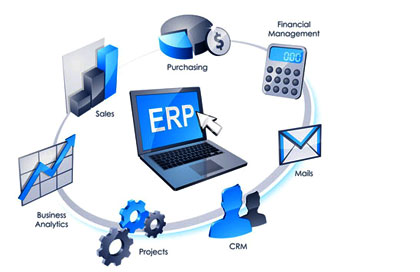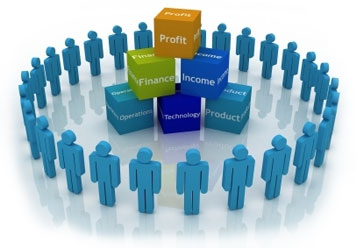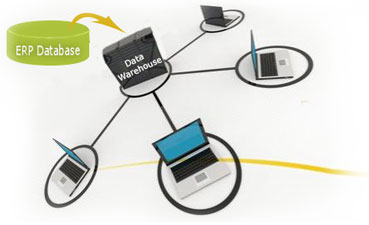
10 ways to reduce costs with an ERP system

Experience has shown companies that the most efficient way to resist on a troubled market is by reducing costs without affecting product quality or the image of the company and at the same time keeping a level of profitability that allows continuous development of the business.
But cost-cutting measures must meet certain conditions, such as:
- To be sustainable – that means they must not have negative effects on the future results of the company
- To be effective, meaning the results must be greater than the investments made in order to apply those measures
- To be realistic,meaning the company must be able to put them into practice.
1. Implement an integrated solution

Integrated solutions bring together the people and informational flows within the company, ensuring the proper and safe management of data and real-time access to it. An ERP software is a system that centralizes all the information into a single platform, providing access to any type of data and facilitating coordination and communication. By choosing an integrated ERP system the costs are reduced because:
Sign up to get FREE CRM Trial
- Information is entered only once in a single database
- Its components can cover a wide variety of activities, such as manufacturing, management, accounting, cost centers, logistics, budgets, etc.
- It is flexible, meaning it can be customized in order to meet the specific needs of each business
- It is a software that is oriented toward workflows, business processes and their optimization
- It is scalable, meaning that along with the company’ s development, it allows the addition of new modules and the reorganization of all business flows
2.Automate and standardize the operational processes
Operations that are performed manually and in a disorganized way are not at all effective, both in terms of time and number of employees required and the likelihood of error occurrence. Standardization and automation of business processes allows the company to perform its activity in best conditions, increasing productivity, reducing integration time of new employees and offering managers a clearer situation on the business. If you implement the ERP system:
- You can import lists of thousands of products or clients, as well as price and discount lists from external files with minimal effort
- You generate further documents, such as delivery notes from orders, invoices from delivery notes, etc. and the details are automatically taken from one document to another
- You can easily set commercial policies by partners or product groups, and when you create documents, the payment terms and prices will be automatically calculated according to your settings
3. Improve the purchasing process

Communicating with suppliers is an important part of your business. An incorrect purchasing process will affect your business and the relationships with the customers. With an ERP system you will primarily be able to synchronize the acquisitions and sales activities. Thus, when analyzing sales data available in ERP you will be able to correctly size the future acquisitions.
- In ERP you can generate purchase orders from sales orders through settings that determine links between certain products and their associated providers
- The ERP system integrates the EDI (Electronic Data Interchange) functionality that allows electronic transfer of documents in XML format. It is used mainly in relation with IKA – International Key Accounts
- Through EDI technology all purchase orders can be sent to vendors in XML format, which will result in significant savings of time and will reduce the possibility of errors
4.Track costs in detail
The ERP system allows you to set spending budgets and watch actual costs within the agreed time frame. Thus, you get higher control over the costs your business generates.
- First, you set the desired cost centers structure in ERP and then the formulas based on which the transactions will be automatically allocated to each center
- You can structure the budgets in any desired way, considering the geographical criteria (working points), departmental (manufacturing, sales, logistics, etc.), types of expenditure (energy, communications, rents, wages, etc.) or even on projects
- Finally, you analyze the forecasted budgets versus those made or in execution, thus obtaining higher control over the financial parameters of your business
- Increase the reaction speed because in the case of identifying overruns, you can quickly take action and avoid imbalances in the budget
5. Optimize stocks
Excess inventory is definitely an important cost. Goods must be stored in appropriate conditions, and those with limited shelf life, once expired, will no longer be suitable for sale and you will lose the money you invested. Implementing an ERP system integrated with an inventory optimization solution will help you to significantly lower the costs of inventory.
- Based on historical sales orders data from ERP, the inventory optimization system predicts the future demand and statistically calculates the optimal quantity needed to cover the estimated sales
- Then, depending on the existing stock, it proposes the purchasing or transfer of products from other locations of the company, thus avoiding the risk of excess stock. The system is able to manage multiple locations and warehouses, proposing the most appropriate solutions so that the stock won’t be over or under sized.
- Another benefit is that it allows you to group products according to certain features so that you can check them in less time – an extremely useful functionality when working with an inventory of thousands of items
6. Manage warehouses more effectively

By integrating the ERP system with a WMS, you can facilitate the transfer of information between Headquarters and warehouses. In addition, the WMS allows you to optimize the available space within the warehouse, thus reducing rents, charges and administration staff expenses.
- You have access to real time information about stock movements, any change occurred in WMS being visible in ERP also
- Customer orders are transmitted automatically from ERP to the warehouse. This means significant time savings because employees are active all day long, as orders are received, compared to the situation in which they would have been forced to process them all at once
- WMS gives you increased visibility over the settlement of goods, facilitating the access for picking. This way, new employees can be productive from day one (no need for accommodation with the store, product lists, etc.), and in addition the risk of picking the wrong products, which can subsequently escalate into a command or even loss of a client, is considerably reduced.
- The system offers suggestions for product settlement, ensuring optimization of warehouse space
7. Control the car fleet
The car fleet generates high costs, starting with drivers’ wages, fuel, revisions, or insurance charges. But besides these may as well intervene unforeseen costs, such as fines, repairs or spare parts. To control them more effectively, you have the Car Fleet Module available in ERP:
- It helps you easy identify any vehicle within your company
- You can keep track of every activity: trail, consumption, accidents and fines
- Follow the terms of the unavailability and identify their causes
8. Improve the sales process
Sales activity is essentially revenue-generating, but involves certain costs that you could decrease by using ERP, CRM or SFA solutions.
- The CRM system is designed for customer and prospects relationship management. It ensures data uniqueness inside your company. Having all data in the same system, employees spend less time looking for information when interacting with customers and prospects, regardless of which department they belong to: marketing, sales, service support or project management
- The selling process can be customized depending on the specifics of each client, product or seller, which allows you to take action more quickly when something doesn’t work as it should and to ensure a shorter sales cycle
- A SFA solution for your field sales team will help reduce costs such as transportation – employees aren’t forced to move that often from customers to office – or communication – because they will have access to information directly into the SFA. The SFA system, integrated with an ERP software, provides a more transparent and easier way to control the sales process.
- The field teams register all documents and information collected from the field directly into the SFA and then send them to ERP, subsequently being generated the sales documents
9. Choose an online shop integrated with the ERP system

An effective way to reduce costs is by implementing an online shop. Management costs are much lower compared to a physical store, in terms of rent, taxes, maintenance, and wages because you will need fewer employees.
- The online store is integrated with the ERP, which means that all information about customers, products, inventory or prices is automatically transmitted between the two systems
- You can provide customers with self-service services within the online store, and so you will be able to reduce staff in the support department
10. Improve the analysis and reporting process
Choosing a Business Intelligence System integrated with an ERP software gives you the possibility to create advanced analysis even if you don’t have technical skills. The system is fully interactive and visually powerful, and the graphs and analysis it provides lets you easily get an overview of the costs your business generates.
- The forecasting ability of the BI system allows you to see how your company’s costs will evolve in the next period, based on the historical data
- Using the what-if analysis you will be able to find out how certain decisions could influence your activity: what happens if you drop or raise the cost or how they will perform in comparison with revenue, if you choose to increase your sales for a particular product and so on.
Click here to Contact Us.


